I usually don’t expect travel to result in regret. Nostalgia, sure. A marrow-deep slurry of wistfulness that the Portuguese call saudade, absolutely. But regret? Not so much. Travel always somehow manages to heave emotions from the brink of sorrow when they wander too close to the edge. Even today’s worst travel episode spiffs up to become tomorrow’s hilarious romp told at the dinner table.
Except for that one carousel ride I did not take in Paris.
Regret.
If I could spin the story in a funny way, here’s what I’d tell over dinner:
We begin in front of an old house in Paris that was covered in vines.
There’s a doughnut involved. And a brownie that would fall under the category of “World’s Best.”
There’s an American accent. And a monument that doth bestride the world like a Colossus.
The fatal flaw in this story is inflexibility from an innate lack of trust.
The conflict depends on one “I want” meeting an opposing “I want.” Which will will win?
The central metaphor revolves around (see what I’m doing here?) circles: doughnuts and carousels.
The conclusion of the story is regret.
Let’s begin.
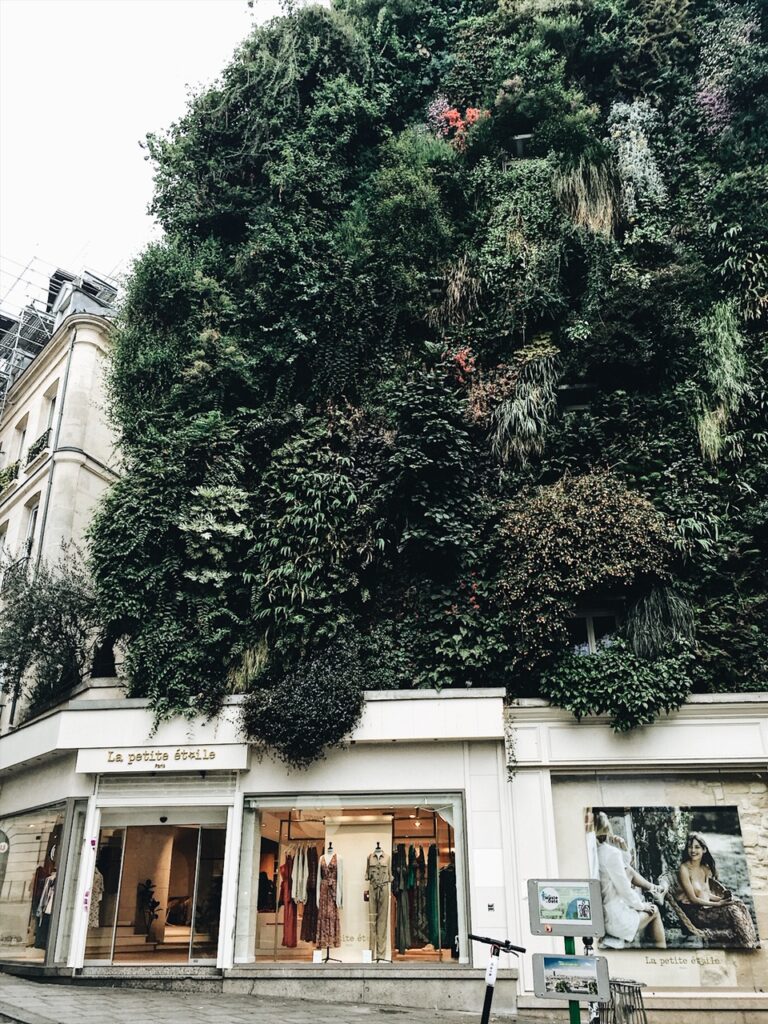
Once upon a regretful time, there was an old house in Paris that was covered in vines.
But the vines are actually houseplants run amuck. The house anchors a triangular convergence of streets. On street level, the houseplants hang like a fringe of bangs over a swanky boutique. This mirage is L’Oasis, designer Patrick Blanc’s 25 meter-high vertical garden on the corner of rue d’Aboukir and rue des Petits Carreaux in the 2nd arrondissement.
Other people halt in the street with my same predicament. We snap pictures. Back up a few steps to frame the whole darn vine-covered house in a single shot. It’s nearly impossible.
A few doors down from L’Oasis is Boneshaker Doughnuts.
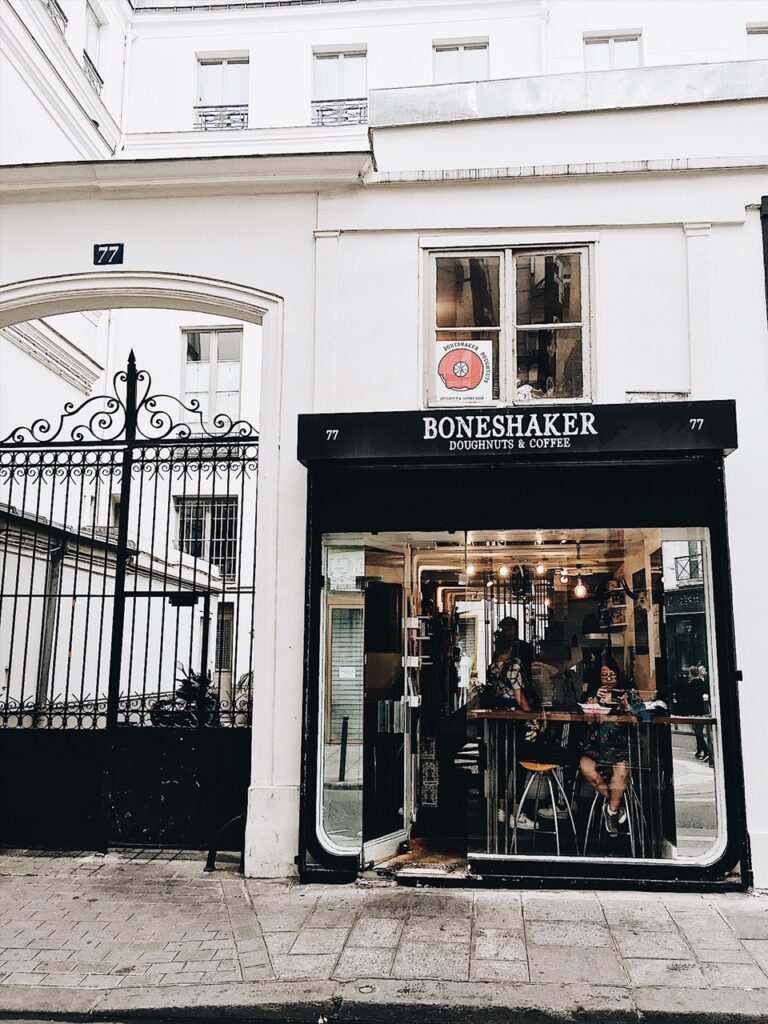
Boneshaker’s minuscule, minimalist black and white facade counters the wall of greenery. A circular hot pink doughnut on the sign draws me past the old house in Paris covered in vines. As delighted as I am by the shaggy wall of greenery, my greatest delight is finding my bodily-self come full circle with my daydreamer-self in Pittsburgh, PA.
Back home in Pittsburgh (home to no old houses covered in vines), I had been drooling from Instagram-afar over the allure of Boneshaker doughnuts. Now bodily in the same city as Boneshaker Doughnuts, I had not included the bakery on our travel itinerary, because, well, time to introduce some characters here.
Children.
My two daughters have hovered in the background of this story, not yet interrupting with their whines of exhaustion and cultural dissonance. They are ages 7 and 10. I have kept them on mute, but they have been quite vocal all along this path. Whining about blisters while I marvel at a wall of houseplants. Sniffling about how good a nearby Subway smells (yes, the American fast food joint, not the metro) while I marvel at the literal oasis of my daydreamed Boneshaker Doughnuts.
Dragging me from mirage to reality is a hand tugging my hand in the opposite direction, a seven-year-old willing me to return to the agreed upon path “home” to our rental apartment, demanding no stops for croissants along the way.
My children go off-script here. They do not eagerly follow their noses. They do not salivate over the flavors offered in yeasty circles of goo on this mild June day. Rhubarb. Caramel Beurre Sale. S’mores. Cinnamon rolls.
There is something wrong with my children. Or their noses. Or their tastebuds. Or their general comprehension of how children in fairy tales should behave. Always, always follow the breadcrumbs to the candy-studded cottage.
I must educate my children better. So I enter Boneshaker alone. I already know from my Insta-obsession that the bakery is owned by an American ex-pat. After 36 hours translating everything for my non-French-speaking travel companions in my to-be-used-in-case-of-emergency French, my brain takes a deep breath of bakery air, and I exhale my order in English. I order one of everything. At the last second, I spy a brick-sized, brick-weighted brownie of such dense, dark chocolate, it practically bleeds cocoa beans. Into the box it goes with the circles of dough and icing.
Later in this story, I will taste this brick and declare it the World’s Best Brownie, and now as I write a year later, that mouthful of bleeding chocolate crumb remains in the top five best bites of my life. But that’s a story for an epilogue.
We fast forward in time and space from a doughnut bakery near an old house in Paris that was covered with vines, through the tubes of the metro where my children “surf” the train cars on the circular platform that joins car to car. The 10-year-old has matted hair and dark eye circles. Her beloved stuffed bunny’s head hangs out of her backpack. The seven-year-old grips my shoulder as her anchor as she surfs. Her squeals are in unison to the wheels as we navigate from Strasbourg-St. Denis to Trocadero.
When we emerge street level, my children get their first postcard view of the Eiffel Tower.
We’ve seen peeks of the Tower over the past 36 hours because that iconic needle pokes itself into the horizon of every place worth mentioning in a Paris guidebook. But seen here, from the stone plain of the Trocadero, the Eiffel Tower is framed perfectly. It’s no longer the interruption. It’s the main idea.
With more magnetism than a bakery, The Eiffel Tower lures me toward its open maw beneath colossal iron legs. As we reach the Seine, my fairytale children jerk from our trajectory, noses hooked on an elusive whiff of something. Carousel.
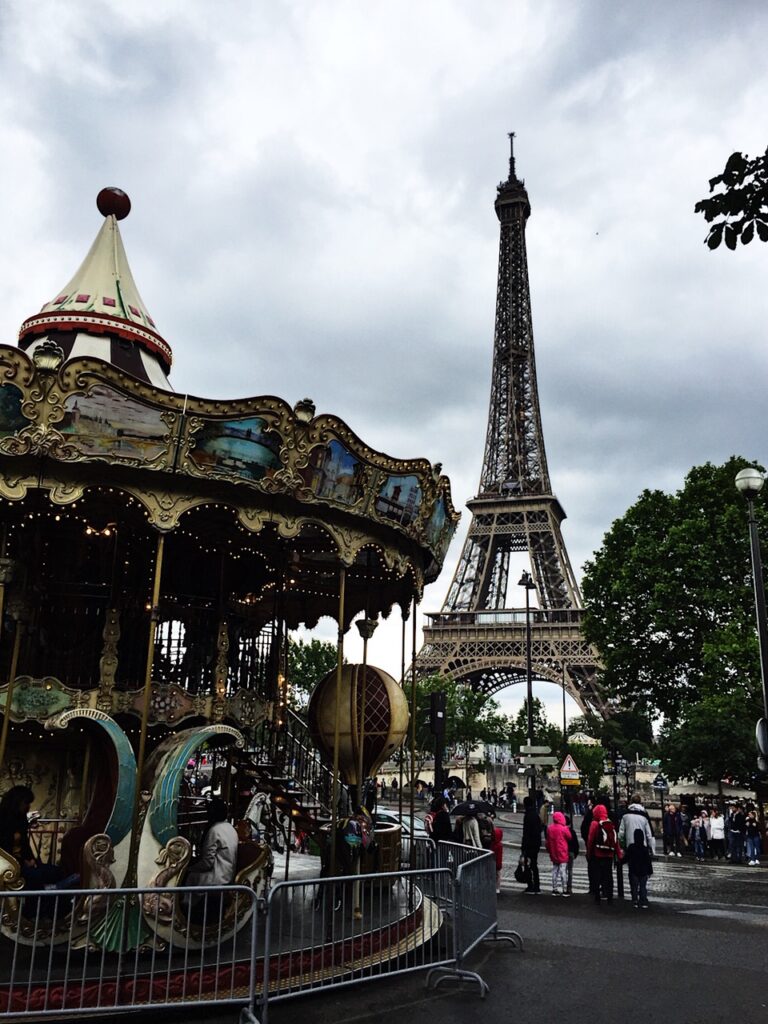
To this day, I honestly can’t say what makes me say no.
“Please, can we ride the carousel?”
“Pleeeeeeeeease? Look at that horse!”
And I respond, No.
It’s the wrong choice. Anyone reading this story should stomp in frustration at the dramatic irony here: “Say Yes, obviously, Yes. Let them be children. Let them be spontaneous. Let this carousel be the universe’s parallel gift to your daughters that Boneshaker doughnuts was to you.”
Just three simple letters: Yes.
But I open my mouth and leak out a word one letter short of satisfactory: No.
So we drag on, a 10-year-old and 7-year-old whining in three letters: “Why?” and “Why not?”
I do not change my answer. Instead, I take a picture of a random French child, wearing of course a beret (which now makes me suspect she may not have been all that French, but for the purposes of my picture taking it was perfectly picturesque.) The French child stands in front of the carousel. The carousel stands in front of the Eiffel Tower. The French child gets in the line for the carousel. Her parents have said, “Oui.”
After teaching American Literature as a high school English teacher, carousels are forever tainted. Thank you, J.D. Salinger, for writing Catcher in the Rye with a carousel so strategically placed as to serve as a haunch of meat for a lion’s den of English teachers.
Salinger’s main character, Holden Caulfield, puts his younger sister on a carousel and steps back to watch: “Then the carousel started, and I watched her go round and round…All the kids tried to grab for the gold ring, and so was old Phoebe, and I was sort of afraid she’d fall off the [horse], but I didn’t say or do anything. The thing with kids is, if they want to grab for the gold ring, you have to let them do it, and not say anything. If they fall off, they fall off, but it is bad to say anything to them.”
I’ve read hundreds of students’ responses to the essay question: “What does the carousel represent to Holden?”
Truth is, I can’t quite come up with a satisfactory answer to that myself. It feels like a strand of meat stuck in my teeth that I still absentmindedly pick from time to time.
The memory of the Paris carousel niggles in the same way. Why did I say No? Why did I pass up a chance to hop on a horse with them? Around and around.
Regret.
One potential essay question: “What does the carousel represent to me?”
Partly my answer might sympathize with Holden. A quick Google search turns up these thoughts from potential scholar Vendela Searle: “The Carousel symbolizes youth, innocence, memories, childhood, infinity, and a pattern that doesn’t change. The consistency of the carousel shows that Holden doesn’t want things to change, he doesn’t want to grow up and move on.”
Do I see the carousel like Holden? A pattern for all that does not change? A consistency? If so, why do I, like Holden, step back and refuse to participate? Perhaps worse, why do I deny my children the ride of infinite youth, innocence, memories, and childhood?
Why do I insist on my will, point a finger, redirect, “See, kids? The Eiffel Tower!” and park myself on a bench under a chestnut tree in order to open a box and pass around yeasty circles of sugary goo as some greater prize than the carousel ride we did not ride?
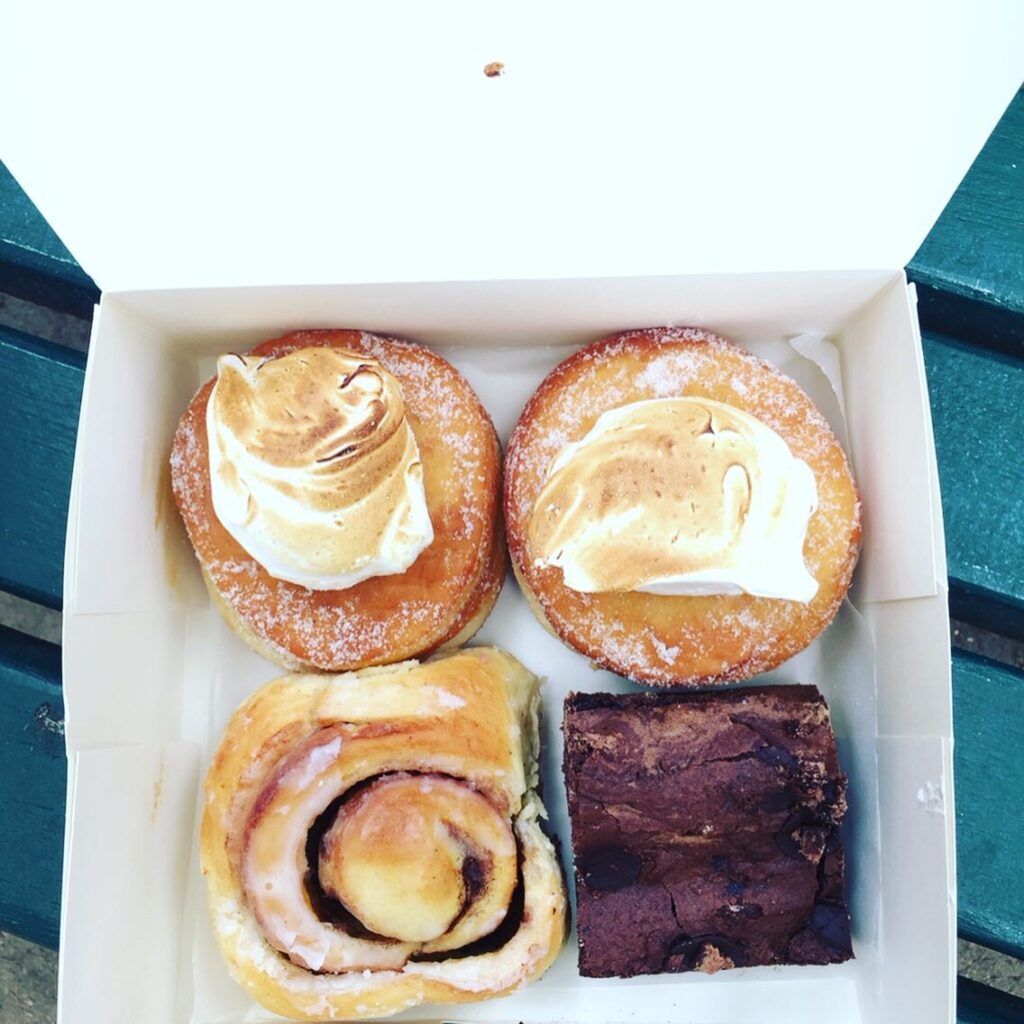
I regret I didn’t choose the circle of the infinite carousel when I had the chance.
Because now I’m stuck in re-run memory, grabbing at a ring I never can reach. Regret.
The end.
Epilogue
I warned you that the story would end on regret. Did you want me to spin that ending to point in a more positive direction? Writers are master manipulators. We can spin anything with metaphor. Symbolism. Opinion. I could shift this ending so that the regret comes across bittersweet, like saudade. I could abuse the circle motif to say that memory allows me to revisit a previous regret and imbue meaning to it. An act of self-forgiveness, perhaps. Or at least personal growth.
But that’s not the way I’m going to tell this story.
I’m simply going to stop here. Because if I live with simple “The End” regret, next time I might say Oui and see where that story leads.
Like the time I said “Yes!” to the addition of a brick-sized gooey brownie that turned out to be, truthfully—no manipulation or exaggeration here, the world’s most delicious brownie.
I remember that bite with zero regret.

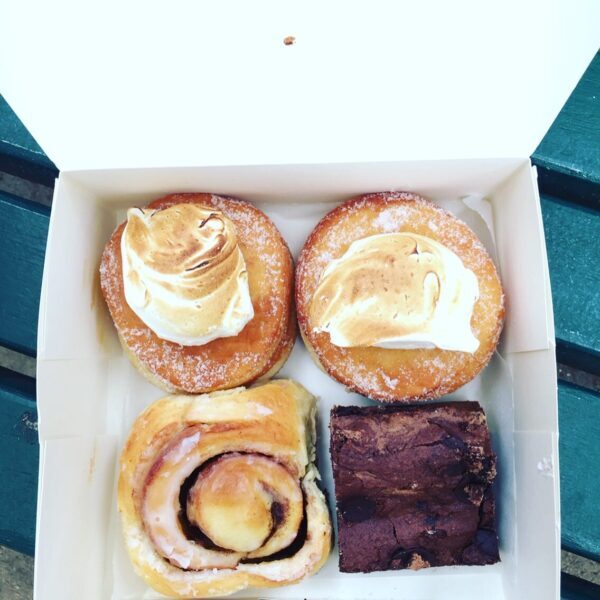
So. Much. Wisdom. Such beautiful insight and writing. Maybe someday the girls will draw a straight line from this memory to your maybe someday grandchildren and say, “Oui”, to the carousel, completing your circle.